Cerebral Monitoring: Insights into Brain Activity and Health
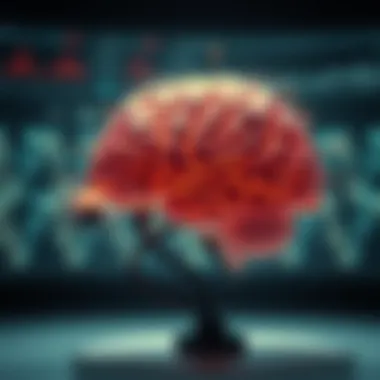
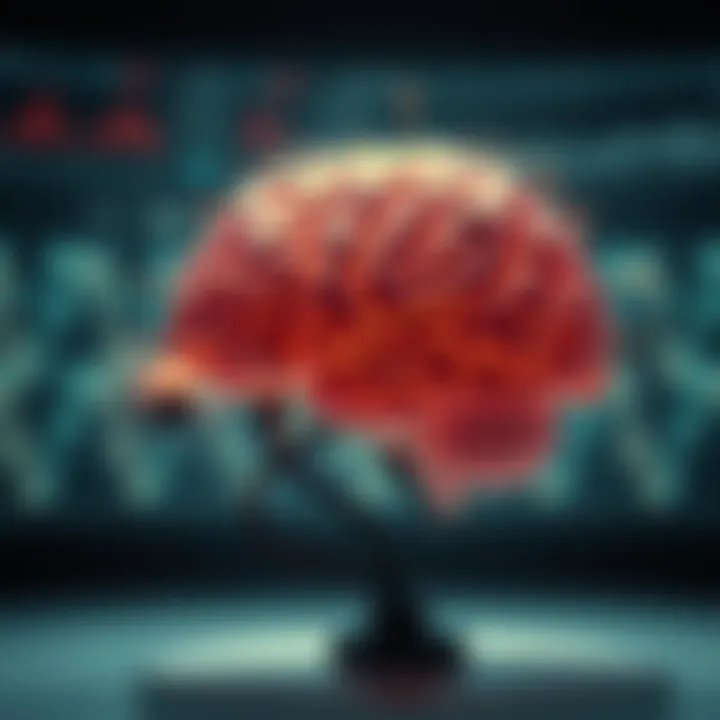
Intro
Cerebral monitoring stands at the forefront of contemporary neuroscience, intertwining technology and the intricacies of brain function. The brain, often dubbed the command center of human existence, is a complex labyrinth of neural networks that govern our thoughts, actions, and emotions. As advances in science emerge, so too does the need for cutting-edge techniques to monitor and understand this vital organ. This exploration goes beyond just observing activity; it encompasses the clinical significance, research implications, and ethical considerations surrounding brain health.
Over the years, various methods for cerebral monitoring have been developed—from neuroimaging techniques like fMRI and CT scans to electrophysiological approaches such as EEG. Each of these methods plays a pivotal role in unveiling the subtleties of brain activity and detecting abnormalities. Understanding these tools, their historical context, and their multifaceted applications becomes essential for any professional involved in neuroscience today.
This article seeks to paint a broad picture of cerebral monitoring. It invites readers—including students, educators, researchers, and healthcare professionals—on a journey through the historical evolution and current landscape of cerebral monitoring, highlighting innovations and advancements that redefine our understanding of brain function and pathology.
By dissecting the methodologies and their applications, this text aims to foster a deeper grasp of how cerebral monitoring impacts a range of fields—from clinical diagnostics to groundbreaking research initiatives.
As we venture forth, it’s crucial to consider not only the scientific aspects but also the ethical ramifications of monitoring the brain, prompting discussions about privacy and the profound implications of such technologies on human life. Let’s dive into the intricacies of this captivating topic.
Preface to Cerebral Monitoring
Cerebral monitoring, or the practice of observing and analyzing brain activity, plays a pivotal role in both clinical and research settings. Its importance cannot be overstated; it offers insights not only into how the brain functions but also into its health status. For students and professionals alike, understanding cerebral monitoring is essential for grasping the complex interplay between brain function and various neurological disorders. This article seeks to highlight the multifaceted nature of cerebral monitoring, elucidating its significance in the current landscape of neuroscience and medicine.
Cerebral monitoring involves different techniques designed to measure and assess brain activity. Each method carries its own set of advantages and limitations, making it critical for practitioners and researchers to select the appropriate approach based on the context and specific needs of their study or treatment. These techniques range from non-invasive imaging methods like MRI to invasive procedures aimed at obtaining direct readings of brain electrical activity. The choices made here often dictate the success of both diagnosis and ongoing treatment.
Moreover, as neuroscientific research advances, the applications of these techniques continue to expand. This exploration will delve into how cerebral monitoring has transformed over the years and how future advancements may further enhance our understanding of brain health. The integration of technology such as artificial intelligence also stands to revolutionize cerebral data analysis, improving not just accuracy but also speed.
In summary, the introductory section lays the groundwork for deeper exploration into cerebral monitoring's methods, applications, and implications. There’s much to unpack, from its clinical impact to the ethical considerations that accompany such monitoring practices. This article aims to serve as a comprehensive guide, providing the necessary knowledge to navigate this complex field.
Defining Cerebral Monitoring
Cerebral monitoring can be understood as the collection and analysis of data regarding brain activity, often utilizing a variety of methods to observe both structural and functional aspects. This broad definition encompasses various techniques that allow medical professionals and researchers to gain insight into brain health and function. Key among these methods are neuroimaging techniques and electrophysiological assessments, which offer snapshots of brain activity in real time.
Central to our understanding of cerebral monitoring is the notion of brain waves—a term that encapsulates the electrical signals generated by neuronal activity. Those signals can reveal vital information about a person's cognitive state, emotional well-being, and overall cerebral health. In many ways, cerebral monitoring acts as a window into the mind, giving us a glimpse of processes that occur beneath the surface.
To sum it up, cerebral monitoring is adaptable and continually evolving, reflecting new findings in neuroscience and engineering. It aims not only to diagnose but also to understand the intricate workings of the human brain—an endeavor that could hold keys to treating various conditions and enhancing cognitive function.
Historical Context
The journey of cerebral monitoring is rich and layered, stretching back over a century. The origins of this field can be traced to early experiments in neurophysiology, where scientists first began to map brain functions. A significant milestone was achieved in the early 20th century with the development of electroencephalography (EEG), a pivotal technique that allowed for the recording of electrical activity from the scalp. This groundbreaking invention laid the groundwork for future advancements, paving the way for an array of creative and practical applications.
Throughout the decades, the field has evolved. From EEG, researchers moved toward more advanced neuroimaging techniques in the latter half of the 20th century, such as functional MRI and PET scans. These technological strides opened up new avenues for understanding brain disorders, paving the way for insights into conditions like epilepsy, Alzheimer's disease, and traumatic brain injuries.
Interestingly, as these methodologies matured, so too did the ethical considerations surrounding cerebral monitoring. The nuances of patient privacy, informed consent, and data security began to surface as integral components of discussions in the field.
Significance of Cerebral Monitoring
Cerebral monitoring is not merely an academic exercise; it's a critical component in the landscape of modern medicine and neuroscience. Understanding its importance starts with acknowledging its dual role in both clinical practice and research. It acts as a bridge, connecting diagnostic precision with therapeutic efficacy. Hospitals and research institutions alike benefit from these capabilities, underscoring the profound impact cerebral monitoring has on patient care and scientific exploration.
Clinical Implications
Role in disease diagnosis
The role of cerebral monitoring in disease diagnosis is pivotal. It enables clinicians to detect abnormalities in brain function that may signal the presence of neurological disorders. For instance, when evaluating a patient with unexplained seizures, EEG can shed light on the electrical activities and patterns that characterize various epilepsy types. This information is invaluable since it guides treatment options and prognostic determinations.
One key characteristic of this role is the ability to provide real-time insights into brain health. Such capabilities make this approach not only beneficial but often necessary. The unique feature here is its non-invasive nature; tools like neuroimaging rely on advanced technology to reveal what's happening in the brain without needing surgical intervention. However, it’s also worth noting that while these techniques are broadly applicable, they can be resource-intensive and require significant training to interpret accurately.
Monitoring treatment effectiveness
Monitoring treatment effectiveness using cerebral methods presents another crucial aspect of this field. After initiating treatment for conditions such as depression or traumatic brain injury, healthcare providers can use various monitoring tools to assess the brain's response over time. This feedback loop is essential, enabling clinicians to fine-tune treatments or switch strategies when necessary.
The standout characteristic is the capacity for ongoing assessment that cerebral monitoring provides, making it a popular choice in dynamic clinical environments. Its unique feature lies in the potential for personalized medicine; by tailoring treatment based on real-time data, clinicians can potentially improve outcomes. Still, a notable downside in this realm is the variability in data interpretation, which can lead to diverse treatment approaches even among well-trained professionals.
Research Applications
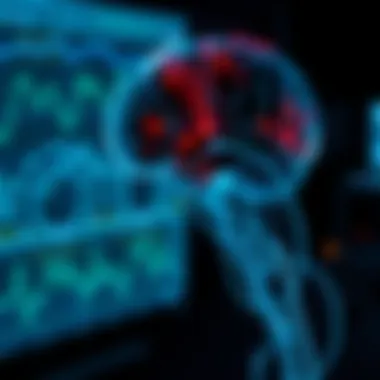
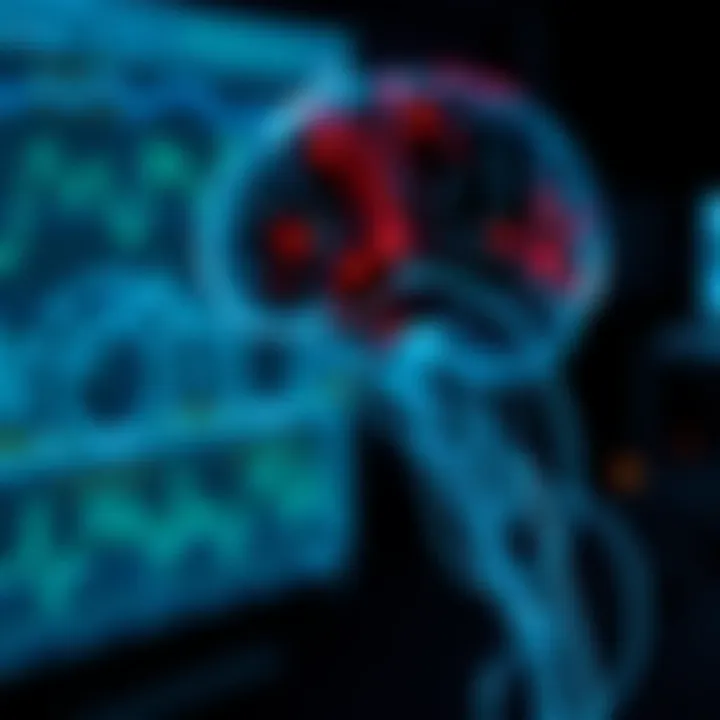
Advancements in neuroscience
In the context of research, cerebral monitoring has spurred significant advancements in neuroscience. By utilizing cutting-edge neuroimaging techniques, researchers can observe the brain in action, unraveling the complexities of neural connectivity and functional hierarchies. For example, studies involving fMRI have clarified the intricacies of brain areas engaged during various cognitive tasks, further illuminating the relationship between structure and function.
The benefit of these advancements is twofold: not only do they enhance scientific understanding, but they also hold the potential to inform therapeutic approaches for various disorders. A unique feature of current research is the integration of AI algorithms, capable of analyzing vast amounts of neural data more efficiently than traditional methods. On the flip side, such reliance on technology necessitates a careful consideration of ethical implications, including data privacy and the potential for over-reliance on AI-generated interpretations.
Understanding cognitive processes
Another essential focus in research is the understanding of cognitive processes through cerebral monitoring. Researchers can track how the brain processes information, revealing insights into memory, attention, and decision-making. Techniques like EEG provide glimpses into the timing and sequences of neural events as they happen, giving depth to our grasp of cognitive mechanics.
This area of focus is beneficial since it lays the groundwork for understanding how cognitive functions are impacted by various factors, such as aging or neurological disorders. A unique aspect of this research is its real-world applicability; findings often translate into concrete strategies for cognitive rehabilitation. However, researchers must also navigate the complex interaction between experimental conditions and real-world functionality, as findings may not always transfer seamlessly outside the lab.
The impact of cerebral monitoring extends beyond mere observation; it influences the very fabric of clinical and theoretical frameworks in neuroscience.
Methods of Cerebral Monitoring
Cerebral monitoring has become essential in both clinical and research settings. This segment will explore various methods of cerebral monitoring that have been developed over the years. These methods are not only instrumental in enhancing our understanding of brain function, but they also offer practical benefits in diagnosing and treating neurological conditions. Each technique comes with its own stacks of pros and cons, and understanding them plays a crucial role in deciding which method to use in specific scenarios.
Neuroimaging Techniques
Neuroimaging techniques allow for visualization of the brain's structure and function, providing insights into the intricacies of brain activity. A pivotal aspect of these techniques is their ability to capture real-time data, which is invaluable for both diagnosis and treatment.
Functional Magnetic Resonance Imaging (fMRI)
Functional Magnetic Resonance Imaging, known as fMRI, is a powerful tool in the landscape of cerebral monitoring. fMRI measures brain activity by detecting changes in blood flow. One core characteristic of fMRI is its capacity to produce highly detailed images of brain activity across different tasks. This makes it a go-to method for identifying brain regions involved in various cognitive functions.
The unique feature of fMRI lies in its non-invasive nature; there's no need for radioactive tracers, which makes it safer for patients. However, its sensitivity to motion can be a limitation since even slight shifts can impact data accuracy. Its ability to provide both strong spatial resolution and decent temporal resolution makes it particularly beneficial for studies in cognitive neuroscience.
Positron Emission Tomography (PET)
Positron Emission Tomography (PET) is another imaging modality that opens a window into metabolic processes in the brain. It works by injecting a radioactive tracer that emits positrons, helping to map active areas of the brain. A key characteristic of PET is its ability to visualize metabolic changes, which can reveal how glucose is utilized by brain regions under different conditions.
One unique feature of PET is its capability to assess neuroreceptor binding, crucial for understanding various neurological disorders. On the downside, while it provides a clear view of brain function, the ionizing radiation it involves raises concerns about safety and repeated use. Nonetheless, PET has been instrumental in research, particularly in understanding diseases like Alzheimer’s and Parkinson’s, providing critical insights into their progression.
Computed Tomography (CT)
Computed Tomography (CT) has long been a staple in clinical settings for brain imaging. It uses X-ray technology to create cross-sectional images of the brain, making it invaluable for rapid diagnosis, especially in emergencies like stroke or traumatic brain injury. One of CT's standout features is its speed; it's remarkably quick, which can be life-saving in acute situations.
Despite its advantages, CT imaging is not without limitations. The use of ionizing radiation poses risks, particularly with frequent imaging, and the resolution is often not as high as that of MRI techniques. However, for initial evaluations, especially in emergency scenarios, CT remains an essential tool in cerebral monitoring.
Electrophysiological Methods
Electrophysiological methods focus on measuring the electrical activity of neurons, which provides a complementary view to imaging techniques. Understanding brain waves and their patterns is crucial for both clinical diagnosis and basic neuroscience research.
Electroencephalography (EEG)
Electroencephalography (EEG) is the go-to method for monitoring electrical activity in the brain. It involves placing electrodes on the scalp to record brain wave patterns, which can indicate brain activity during different states, such as wakefulness, sleep, and various neurological conditions. A primary characteristic of EEG is its high temporal resolution, allowing for the capture of rapid brain activity.
EEG's unique feature is its ability to provide real-time data, particularly in monitoring seizures and assessing brain functionality in real time. However, its spatial resolution is limited, meaning it can be challenging to pinpoint the exact location of brain activity. Despite this, EEG remains a favored choice for epilepsy studies and sleep research due to its non-invasive nature and relatively low cost.
Magnetoencephalography (MEG)
Magnetoencephalography (MEG) is a sophisticated technique that measures the magnetic fields produced by neural activity. It has emerged as a powerful method in the arsenal of cerebral monitoring. One key characteristic of MEG is its ability to provide both high temporal and spatial resolution, allowing researchers to pinpoint brain activity with remarkable accuracy.
What makes MEG stand out is its capacity to detect activity deep within the brain, which is a limitation in many other non-invasive techniques. However, MEG is costlier to implement and requires specialized equipment, making widespread use challenging. Despite these hurdles, MEG plays an important role in understanding complex brain functions and disorders.
Innovative Approaches
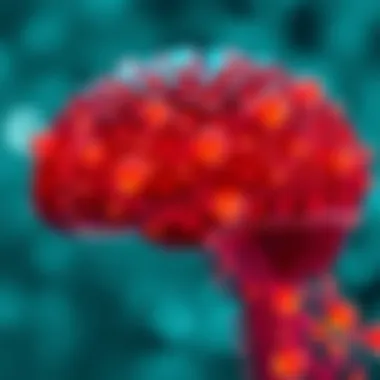
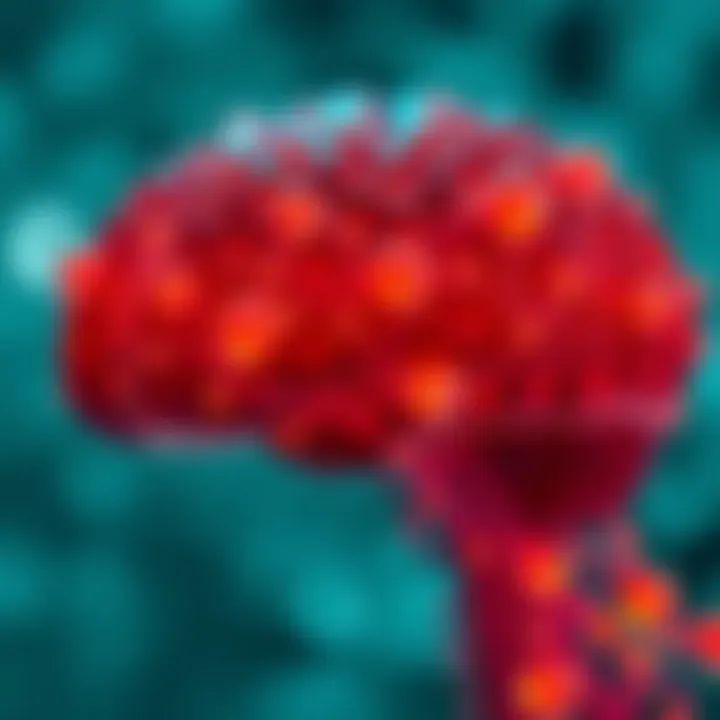
The field of cerebral monitoring is not static; innovative approaches are continuously emerging, refining how we understand brain function.
Near-infrared Spectroscopy (NIRS)
Near-infrared spectroscopy (NIRS) is a novel imaging technique that monitors brain oxygenation and hemodynamics using harmless near-infrared light. A notable characteristic of NIRS is its portability, allowing for measurements in various situations, including surgical settings or during physical activity. Its non-invasive approach and ease of setup make it an attractive choice for clinical use.
However, its spatial resolution does not match that of other methods, and its effectiveness can be limited by the depth of the measurements. Despite this, NIRS has become useful for monitoring brain function in neonates and during surgeries, providing real-time data without the complications of more invasive techniques.
Multi-modal Monitoring
Multi-modal monitoring combines multiple techniques to enrich perspective on brain activity. This approach leverages the strengths of various methods, such as combining fMRI, EEG, or PET to provide a comprehensive view of brain function. A core characteristic of multi-modal monitoring is its ability to validate findings across different measures, which can significantly enhance the reliability of results.
The unique feature here is the integration of diverse data streams which can lead to novel insights about brain functioning and pathologies. However, coordinating different modalities can introduce complexity and require advanced data processing techniques. Still, this approach holds promise for advancing our understanding of cerebral dynamics, leading to breakthroughs in both research and clinical applications.
Interpreting Cerebral Data
Interpreting cerebral data is a cornerstone of understanding brain function and pathology. Without proper interpretation, the massive amounts of data gathered through various monitoring techniques can be nothng more than inscrutable numbers and graphs. The significance of this process extends beyond mere analysis; it plays a critical role in both clinical settings and research applications. Proper interpretation can lead to breakthroughs in identifying neurological disorders, informing treatment pathways, and enhancing cognitive health.
Data interpretation involves translating complex data sets into actionable insights. This demands a blend of technical skills and intuitve understanding that helps to correlate data patterns with biological realities. As brain research becomes increasingly sophisticated, the ability to distill information into meaningful narratives has become not just beneficial, but necessary.
Data Processing Techniques
Data processing techniques are the backbone of interpreting cerebral data. Various algorithms and statistical methods are utilized to filter noise, detect anomalies, and extract significant patterns from the raw data collected through neuroimaging or electrophysiological means. Each technique serves a different purpose, and understanding these can transform how information is utilized.
- Signal Processing: Noise reduction techniques help to eliminate irrelevant signals, thereby enhancing the clarity of brain signals.
- Statistical Analysis: Tools like regression analysis and machine learning models allow researchers to identify correlations between brain activity and behavioral outcomes.
Alongside these techniques, integrating multiple data types can yield the most comprehensive insights. For instance, combining fMRI and EEG data can create a richer picture of brain function than either method alone.
Understanding Neurofeedback
Neurofeedback is an emerging field that utilizes data interpretation to help individuals gain control over their brain activity. It involves real-time monitoring of brain signals and providing feedback to the individual. By training users to alter their brain activity, neurofeedback has demonstrated potential in treating various conditions, including attention deficit hyperactivity disorder (ADHD), anxiety disorders, and even epilepsy.
The essence of neurofeedback lies in its ability to teach self-regulation. Users can learn, for example, to increase or decrease activity in specific brain regions by adjusting their mental processes based on feedback from the monitoring equipment.
- Application Cases: Participants often see improvements in focus, emotional regulation, and overall mental health.
- Research Evolution: Research in this area is relatively new but rapidly evolving, with studies like those found on PubMed showcasing growing evidence of its efficacy.
Understanding how cerebral data plays a role in neurofeedback opens doors to personalized treatment methods, paving the way for tailored interventions based on individual brain profiles.
Interpreting cerebral data not only informs clinical practices but also helps bridge the gap between neuroscience and everyday life. The insights gleaned from data interpretation have the potential to change lives, illuminating pathways for better health and cognitive performance.
Ethical Considerations
The field of cerebral monitoring stands on the thin line between innovation and ethical responsibility. As we probe deeper into understanding brain function, important ethical issues surface that govern how we collect, process, and utilize sensitive cerebral data. These ethical considerations are not just a regulatory requirement, but they are paramount to maintaining trust between researchers and participants, as well as ensuring the advancement of neuroscience without infringing on individual rights.
Patient Privacy and Data Protection
In the realm of cerebral monitoring, patient privacy is a cornerstone principle. Gathering data related to brain activity—be it through neuroimaging or electrophysiological measures—requires meticulous attention to privacy protocols. When individuals volunteer for monitoring, they are more than mere subjects; they are custodians of their own neural data.
Patient data must be protected from unauthorized access or misuse. Researchers must implement stringent security measures to safeguard sensitive information. This includes encrypting data during transmission, restricting data access to authorized personnel, and ensuring secure data storage. Failure to uphold these standards can lead to significant legal repercussions and, more critically, cause irreparable harm to the trust that forms the backbone of research participation.
- Secure Data Handling: Ensuring all data remains confidential and secure at all times.
- Anonymization Procedures: Stripping identifiable information from datasets to protect participant identity.
- Transparency in Data Use: Clearly communicating to participants how their data will be used and shared in research.
Incorporating these practices not only fosters trust among participants but also advances the integrity of research outcomes, therefore paving the way for future advancements in the field.
"Trust is the foundation on which all research is built; without it, progress becomes an uphill battle."
Informed Consent in Research


Informed consent stands as a fundamental ethical pillar in cerebral monitoring practices. Participants must be adequately educated about what their involvement entails, including potential risks and benefits. It extends beyond simply signing a form; it requires a comprehensive dialogue where researchers explain the intricacies of the procedures and the implications of the findings.
Key elements of informed consent include:
- Comprehensive Information: Participants should receive clear documentation that outlines the nature of the study, the procedures involved, and the potential risks and benefits.
- Voluntary Participation: Individuals should know they can withdraw their consent at any time without fear of retaliation or loss of benefits.
- Capacity to Consent: Researchers must assess whether participants have the cognitive capacity to provide informed consent, especially in studies involving individuals with compromised cognitive functions.
Without proper informed consent, research lacks validity and can conflict with ethical norms. Consent must be an ongoing process, allowing participants to ask questions and seek clarity throughout the study. This not only protects the rights of the participants but also enhances the quality of the research, ensuring findings are drawn from a well-informed cohort.
Future Directions in Cerebral Monitoring
The landscape of cerebral monitoring is evolving at a pace that’s hard to keep up with. As we look ahead, it’s paramount to understand the potential that lies within this field. New technologies and methodologies are not just adding to the arsenal of tools available to scientists and clinicians; they’re fundamentally reshaping the way we approach brain health and research. This section will delve into emerging technologies and explore how they stand to revolutionize clinical practice.
Emerging Technologies
Artificial Intelligence in Analysis
Artificial intelligence (AI) is carving out a significant niche within cerebral monitoring. Its ability to process vast amounts of data quickly and accurately is its standout feature. For instance, AI algorithms can analyze neuroimaging data and identify patterns that might elude human analysts. This allows for quicker diagnoses and tailored treatment plans that can adapt over time.
One key characteristic of AI in this context is its learning capacity. Through machine learning, AI can improve its analysis as it encounters more data over time, which enhances prediction accuracy. This adaptability is a tremendous asset for interdisciplinary collaboration in both research and clinical settings.
Yet, there’s a double-edged sword to consider. While AI can deliver quicker insights, it also raises questions regarding data integrity and the potential for inherent biases in algorithms. These disadvantages thus warrant careful consideration, particularly in sensitive applications involving human health.
"Artificial intelligence doesn't just facilitate diagnosis; it enables a deeper understanding of brain functionality, greatly benefiting both researchers and patients."
Advances in Wearable Technology
Wearable technology is another area that’s catching the eyes of researchers and clinicians alike. The recent advances in this field are creating opportunities for real-time monitoring of brain activity outside of traditional clinical settings. These devices, like EEG headsets designed for home use, allow for continuous data collection, which can be crucial for understanding various neurological conditions.
The significant characteristic of these wearables is their accessibility. Patients no longer need to visit a lab; instead, they can interact with a device that fits seamlessly into their daily lives. This shift not only empowers patients but also enhances data collection, increasing the chances of capturing significant changes in brain activity.
However, there's also caution around this ease of access. With increased data collection, there's a risk of overwhelming healthcare providers with vast amounts of information, making it challenging to extract actionable insights. Balancing the benefits and potential pitfalls of these technologies will be crucial as we move forward.
Potential for Clinical Practice
The practical applications of these emerging technologies in clinical settings are truly exciting. AI and wearable tech can merge to create a more nuanced understanding of brain function and dysfunction, potentially leading to more effective treatments. For instance, continuous monitoring could lead to earlier interventions in conditions like epilepsy or mental health disorders, which could markedly improve patient outcomes.
In looking towards the future, it’s essential for institutions to adopt a thoughtful approach to integrating these technologies. Training healthcare professionals to effectively utilize AI tools and wearable devices will ensure that the full benefits can be realized. Furthermore, ongoing research is required to validate the findings generated from AI analyses and wearable technologies to harmonize clinical trust with data innovation.
Ultimately, the future of cerebral monitoring holds immense promise. With careful attention and robust methodologies, we can enhance our understanding of the human brain and improve clinical outcomes in ways previously imagined only in science fiction.
End
Cerebral monitoring is not just a technical pursuit, but an essential aspect of understanding the brain's complexities. The importance of this topic lies in several critical elements that influence both clinical and research contexts. First, it highlights how vital it is to monitor brain activity accurately, which directly relates to diagnosing neurological disorders and planning effective treatments. When we tune into the brain's rhythms, we can catch issues that may otherwise go unnoticed until they escalate.
Moreover, the article has discussed various methods and technologies in cerebral monitoring, each with its unique advantages. For instance, neuroimaging techniques like fMRI provide detailed images of brain activity, while electrophysiological methods like EEG offer real-time insights into functional dynamics. Both approaches significantly contribute to our understanding and enhance the potential for innovations in treatment.
Let's not overlook the ethical considerations delineated earlier. They remind us that while we strive for scientific advancement, we must also protect patient rights and ensure informed consent in research practices. These aspects are paramount in fostering trust between researchers and patients, paving the way for more transparent clinical studies.
In essence, cerebral monitoring serves as the backbone of modern neuroscience. It uncovers the brain's secrets and lays the groundwork for future innovations. The implications of such monitoring extend beyond academia; they seep into the healthcare industry, promising better outcomes for patients through tailored therapies.
"The brain has the power to heal itself; cerebral monitoring is the compass that guides us in this journey."
As we turn our gaze toward the horizon of future research, the ideas presented here can serve as a springboard for new discoveries and clinical applications.
Summary of Key Points
- Importance in Diagnosis: Cerebral monitoring is crucial for diagnosing neurological disorders by observing the brain's activity patterns.
- Technological Methods: Various methods like fMRI and EEG each offer distinct insights into cerebral activity, enhancing our understanding.
- Ethical Considerations: Protecting patient privacy and obtaining informed consent are fundamental in conducting research in this field.
- Impact on Treatment: Continuous monitoring can lead to personalized treatment plans that could significantly improve patient outcomes.
Implications for Future Research
Future research directions in cerebral monitoring seem promising, as emerging technologies open new avenues for exploration.
- Artificial Intelligence: AI's integration into data analysis could reveal patterns not identifiable through traditional means, potentially revolutionizing how we interpret cerebral activity.
- Wearable Technologies: The rise of wearable devices that monitor brain health brings monitoring directly to everyday life. This could facilitate preventative care and early intervention.
- Interdisciplinary Collaboration: Combining insights from neuroscience, psychology, and technology can foster innovations that enhance monitoring tools and methods.
Ultimately, the research community must remain vigilant in addressing the ethical ramifications of these advancements while excitedly exploring the vast potential of cerebral monitoring.







